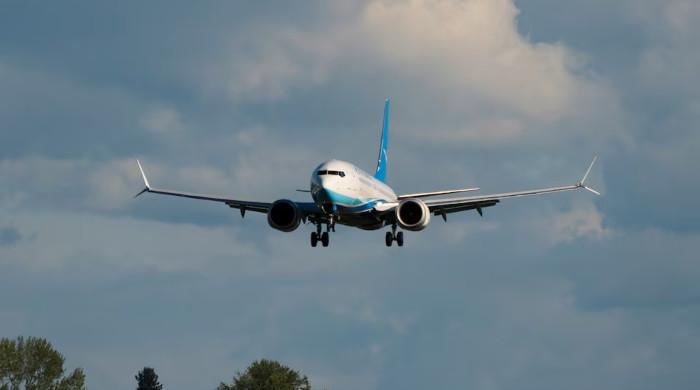SBP reduces foreign currency cash carrying limits for travel purposes
Annual ceiling to take out foreign currency for adults and minors shall be $30,000 and $15,000
November 08, 2022

- Annual ceiling to take out foreign currency for adults shall be $30,000.
- Individuals with age 18 years and above (adults) can carry $5000 per visit
- Those below age of 18 years (minors) can carry $2,500 per visit.
KARACHI: The State Bank of Pakistan (SBP) Tuesday reviewed the existing foreign currency cash-carrying limits for travel purposes, and decided to further rationalise the same.
According to a statement issued in this regard, the central bank mentioned that as per the revised limits, individuals of age 18 years and above (adults) can now take foreign currency out of Pakistan equivalent to $5,000 per visit, while those below the age of 18 years (minors) can carry equivalent to $2,500 per visit.
The SBP further mentioned that the annual ceiling to take foreign currency abroad for adults and minors shall be $30,000 and $15,000, respectively.
“For taking out foreign currencies by persons travelling to Afghanistan, the existing limits prescribed earlier as per SBP Notification No. F.E 2/2021-SB dated October 06, 2021, shall remain unchanged,” the central bank mentioned.
Key changes
- Individuals with age 18 years and above (adults) can carry $5000 per visit;
- Those below age of 18 years (minors) can carry $2,500 per visit;
- Annual ceiling for carrying US dollars for adults shall be $30,000;
- Annual ceiling for carrying US dollars for minors shall be $15,000;
- An annual limit of $30,000 has been prescribed for individuals for international transactions.
The SBP mentioned that per-visit limits will be applicable immediately, while the annual limits will be applicable from January 1, 2023.
In addition, the central bank has observed that debit and credit cards are being used for transactions, which are not aligned with the profile of the individual or are intended for commercial purposes.
Therefore, SBP has advised banks to ensure that the use of debit and credit cards for international transactions is aligned with the profile of cardholders and for their personal needs only.
Besides, an annual limit of $30,000 has been prescribed for individuals for international transactions.
The central bank emphasised that the purpose of debit and credit cards is to facilitate individuals in making payments for transactions that are of personal nature.
“The limits on these cards as well as payments through them, both domestic and international, should therefore be aligned with the profile of the cardholder,” the statement read.
The central bank further notified that it shall be the responsibility of a customer to ensure that their annual limit is not breached at any time. However, banks are required to monitor these limits on a consolidated basis for each individual.











